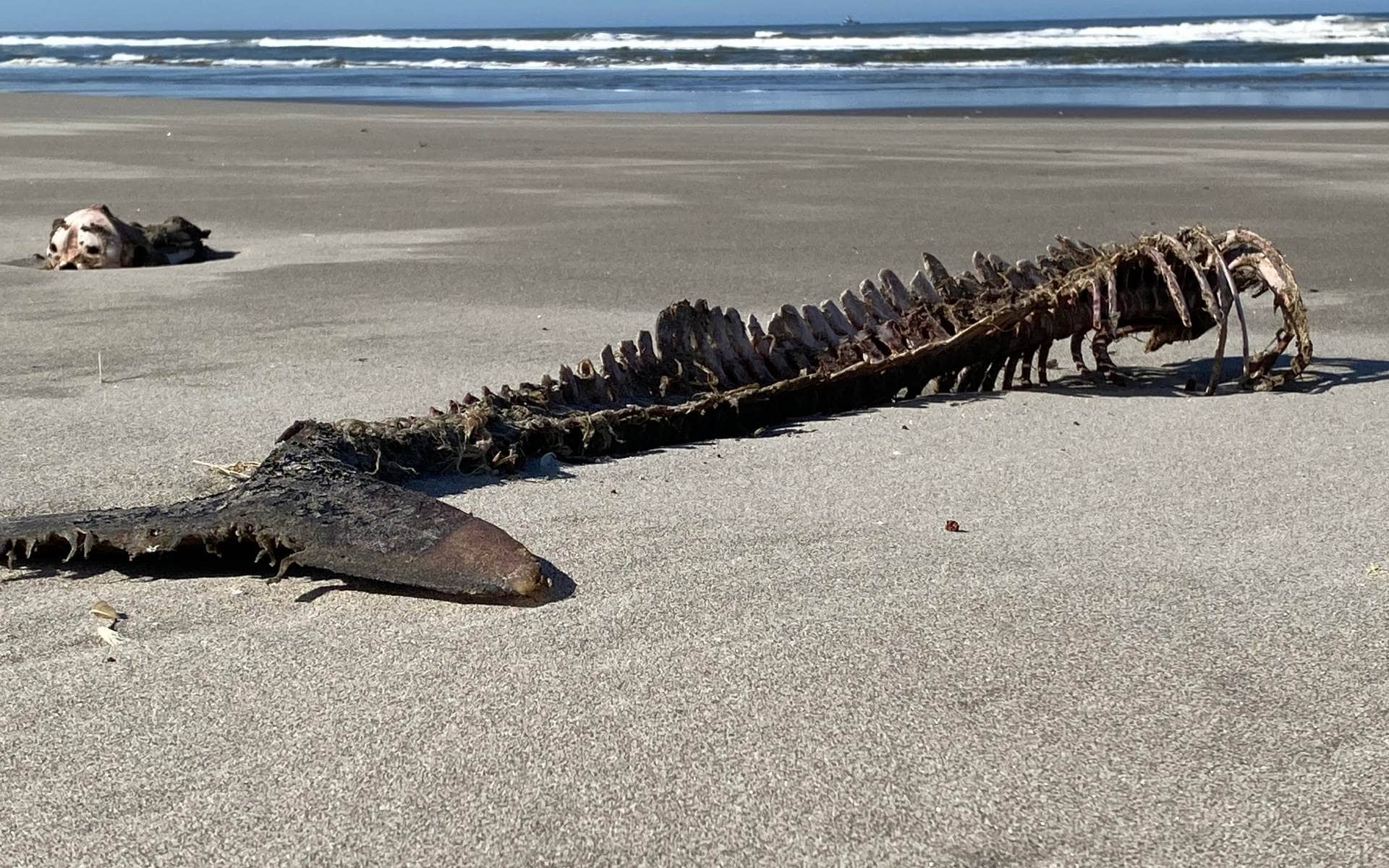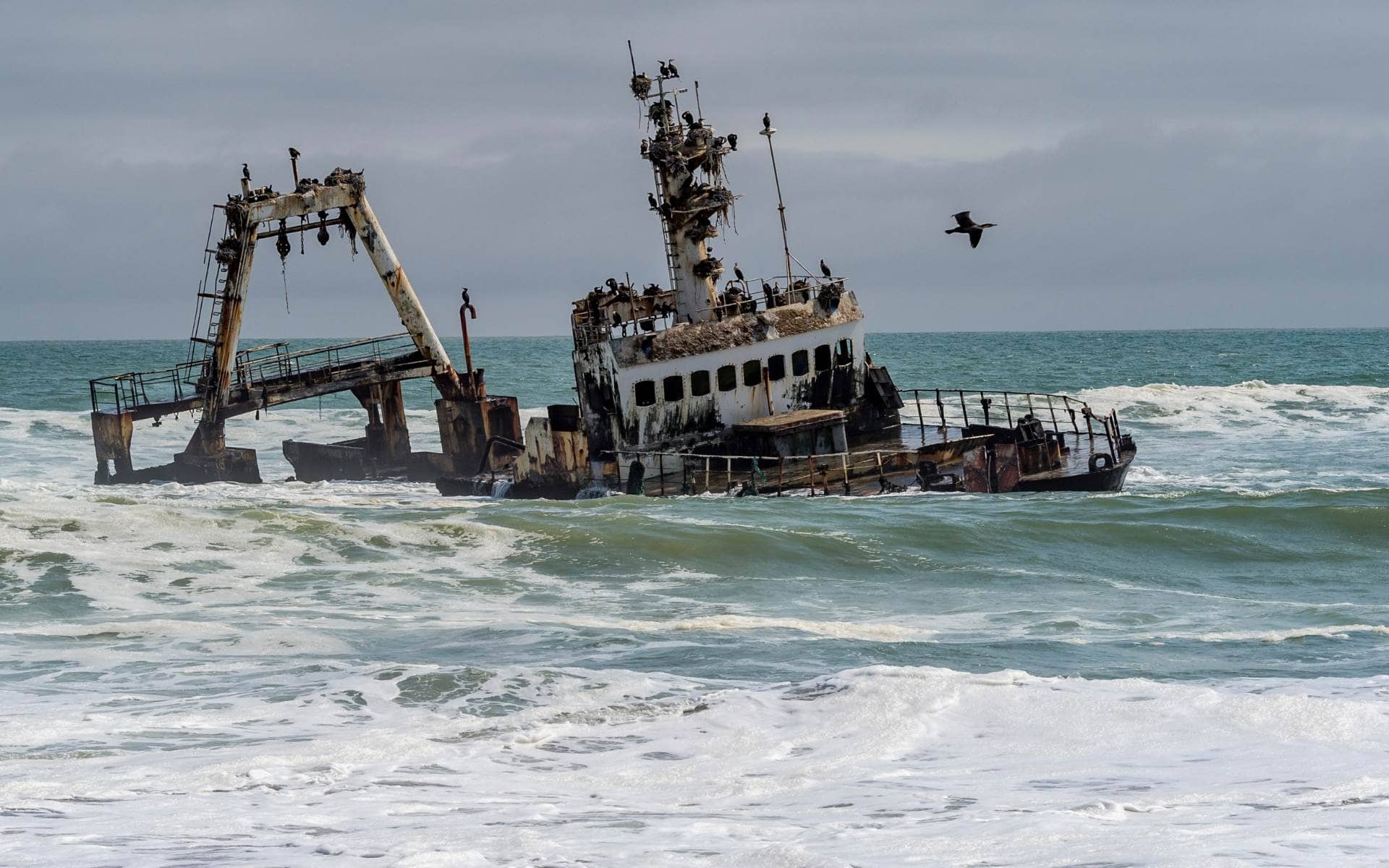Imagine climbing a golden sand dune; you make it to the top and below, the ocean laps the shore, partly obscured by a layer of fog that coats the land. This is the Skeleton Coast, so named due to the whale bones on the shore and the remains of shipwrecks just off the coast. It’s here, along the 500 km/310 mi coast, that travellers can explore one of the most fascinating wilderness areas on the continent.
Must-Visit Areas on the Skeleton Coast

As the temperatures of the desert meet the Atlantic Ocean, the conflict causes an almost permanent layer of mist, creating a mystical environment within which you can visit a seal colony and go birdwatching.
Cape Fur Seal Colony: Largest in the World

Located at Cape Cross along Skeleton Coast is the largest colony of Cape fur seals on earth. During a Namibia luxury holiday, you can visit this massive group of seals to watch mothers with their young pups, seals playing together on the rocks and in the ocean, and males battling for territory.
Clay Castles: Natural Palaces
The Clay Castles are an intriguing day trip to take while on a Namibia safari. Located in the Skeleton Coast National Park along the Hoarusib River, these striking structures are carved from sedimentary deposits by the river’s flow and wind erosion. These geological formations offer a fascinating look into the power of nature’s forces. The area is also home to a diverse array of wildlife, including desert-adapted elephants, lions, and hyenas.
When’s the Best Time to Visit the Skeleton Coast?

Skeleton Coast is a year-round safari destination. Summer starts in November and coincides with the rainy season; temperatures average around 29 °C/84 °F and the rains are minimal. The occasional rain cools down the environment and clears the air of fog. At this time of the year, migrant bird species enter the region, making for excellent birdwatching safaris.
From May to October, the land sees a drop in rain and temperatures as winter settles around the land. While daytime temperatures are mild, early mornings and evenings are cold, so packing warm layers is a must. Due to the reduced rain, the desert landscape is mesmerising and game viewing is easier.
Animals Found Along the Skeleton Coast

The desert meeting the ocean creates an interesting and challenging environment for wildlife. While on a Namibia safari here, you can witness incredible desert-adapted species, including elephants, giraffes, gemsbok (oryx), springboks, and baboons.
Along the coast where seal colonies reign, you may spot hyenas and – if you’re extremely lucky – a lion eating an unlucky seal or waterbird.
Skeleton Coast is an excellent birdwatching destination in Namibia. Rüppell’s korhaans, Benguela long-billed larks, tractrac chats, jaegers, and skuas are on this region’s birding checklist.
How to Get to the Skeleton Coast
After landing in Namibia’s international airport, Hosea Kutako International Airport, in Windhoek, you can then get a transfer to a smaller regional airport from which you can take a charter flight to Möwe Bay, a close airstrip to Skeleton Coast National Park.